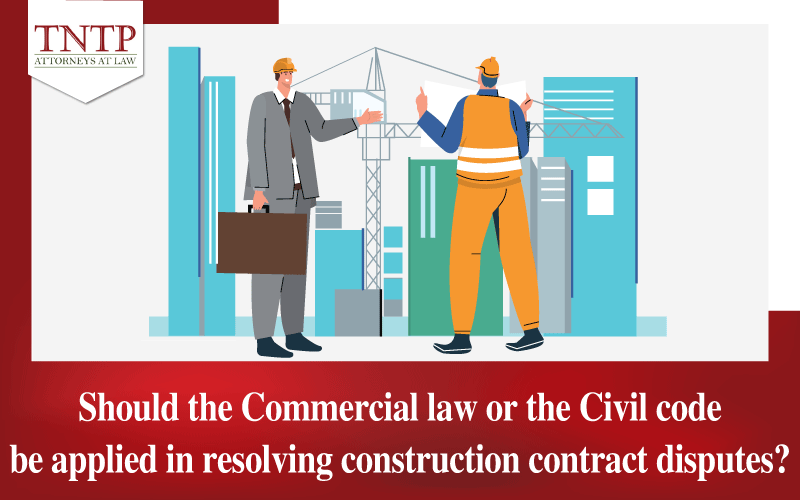Law regulating the types of enterprise reorganization: Division and separation of enterprises
Enterprise reorganization is not only an activity of the enterprise to restructure but also a tool for the enterprise to meet its development goals and strategy. However, in order to protect the legitimate interests of employees, partners and stakeholders, the reorganization of the enterprise must comply with specific legal provisions. This ensures that the restructuring process does not harm or infringe on the interests of the parties involved. Pursuant to Clause 31, Article 4 of the Law on Enterprises 2020, enterprise reorganization includes types of reorganization such as division, separation, consolidation, merger or transformation of enterprise types. Within the scope of this article, in order to help enterprises understand and choose the most appropriate form, TNTP will focus on analyzing the current legal regulations on two types of enterprise reorganization: division and separation of enterprises.
1. Divide of enterprises
Enterprise division is a type of enterprise reorganization, whereby an enterprise is divided into two or more new enterprises and the existence of the divided enterprise is terminated.
Currently, the Law on Enterprises 2020 does not stipulate the division of enterprises, but only the division of companies. Accordingly, Clause 1, Article 198 of the Law on Enterprises 2020 stipulates that a limited liability company, a joint stock company can divide the assets, rights and obligations, members and shareholders of the existing company to establish two or more new companies.
Accordingly, only a limited liability company and a joint stock company are allowed to divide the company. Article 198 of the Law on Enterprises 2020 stipulates the division of the company as follows:
– Regarding the proceeding: Limited liability company or joint stock company will divide the assets, rights and obligations, members and shareholders of the existing company to establish two or more new companies.
Based on the method of division and conversion of the contributed capital and shares of the divided company to new companies in the Resolution and Decision on division of the company, the number of members and shareholders and the number and proportion of share ownership, contributed capital of members and shareholders and charter capital of the new companies will be decided.
– Regarding the time when the divided company ceases to exist: It is after the new companies are granted the Enterprise Registration Certificate.
– Regarding inheritance and transfer of legal rights and obligations: New companies naturally inherit all legal rights, obligations and interests divided according to the Resolution or Decision of the divided company.
At the same time, with obligations that occurred before the division of the company, the new companies must be jointly and severally responsible (for obligations, unpaid debts, labor contracts and other property obligations) or reach an agreement with creditors, customers and employees for one of the new companies to perform the obligations on their behalf.
2. Separation of enterprises
Conceptually, enterprise separation is the separation of an enterprise into two or more enterprises without terminating the existence of the separated enterprise.
Unlike enterprise division, when separating the enterprise, a new enterprise is born and exist independently from the separated enterprise. Consequently, a part of capital, assets, and members were transferred to the new company, but the old enterprise continued to exist.
The Law on Enterprises 2020 and its guiding documents also do not stipulate the separation of enterprises but only the separation of companies. Accordingly, Clause 1, Article 199 of the Law on Enterprises 2020 stipulates that a limited liability company or a joint stock company may be separated by transferring part of the assets, rights, obligations, members and shareholders of the existing company to establish one or several new limited liability companies and joint stock companies without terminating the existence of the separated company. From here, similar to the regulations on company separation, it can be understood that only limited liability companies and joint stock companies are allowed to reorganize enterprises in the type of enterprise division.
Article 199 of the Law on Enterprises 2020 stipulates the division of the company as follows:
– Process: A limited liability company or joint stock company may transfer part of the assets, rights, obligations, members and shareholders of the existing company to establish one or several new limited liability companies or joint stock companies without terminating the existence of the separated company.
– Procedure: Due to the legal consequences of the separation of the company is a newly established company, independent of the old company, it is necessary to clearly separate the capital, members and shareholders between the old company and the new company, so the law stipulates that the separated company is obliged to carry out the separation procedures as follows:
(1) For new companies, the separated companies must be registered; and
(2) The separated company must register a change in charter capital, the number of members and shareholders corresponding to the capital contribution, shares and the number of members and shareholders is reduced (if any).
– Regarding the inheritance of rights and obligations: The separated companies will inherit all legal rights, obligations and interests divided according to the Resolution or Decision of the enterprise.
For the obligations incurred before the separation of the company, after the registration of the enterprise, the separated company and the separated company must be jointly and severally responsible for the obligations, unpaid debts, labor contracts and other property obligations of the separated company. Unless the separated company, the new company, the creditors, customers and employees of the separated company reach other agreements.
Above is the article “Law regulating the types of enterprises reorganization: Division and separation of enterprises” that TNTP sends to readers. Hope the article is useful for those who are interested in this issue.
Best regards,



